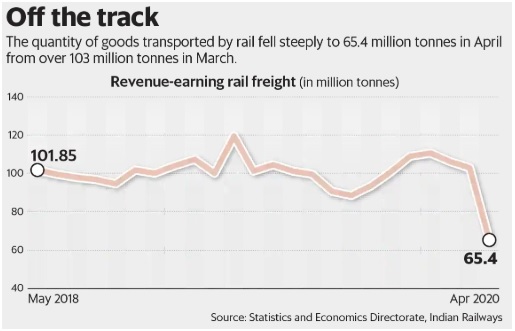Railway freight statistics are a good indicator of the overall state of an economy. In April, the amount of freight moved by Indian Railways was 65.4 million tonnes, down 35.3% from a year ago.
Over the years, coal has formed around half of the total amount of commodities moved by the Railways. In April, the movement of coal fell 34.5% to 34.6 million tonnes, after falling 14.4% in March. This indicates that most factories and companies have been shut over the last few weeks and, thus, don’t need electricity. Given the bulk of the power produced in India is thermal, this translates into lower demand for coal and, hence, lower movement of coal by the Railways. Most state electricity boards/discoms price industrial power at a higher rate to subsidize power supplied to households. This formula is not working now.
The transport of petroleum products by rail was down 35.6% to 2.3 million tonnes in April. This explains the lack of demand for petrol and diesel, with vehicles not plying due to the lockdown. It also explains the Centre’s steep hike of excise duty on petrol and diesel and state governments’ move to raise the sales tax on these fuels. Cement movement was down 90.6% to 0.86 million tonnes. This tells us that construction activity has come to a standstill, indicating why many migrant workers are queuing up to go home.
The movement of foodgrains during April soared 135.5% to 6.2 million tonnes. This was primarily on account of the distribution of extra foodgrains decided upon by the central government. Grains had to be moved from surplus states to deficient ones. In the months ahead, it might be a good idea to keep track of revenue-earning railway freight and which way it is headed to get an overall feel of the level of economic activity in India.






